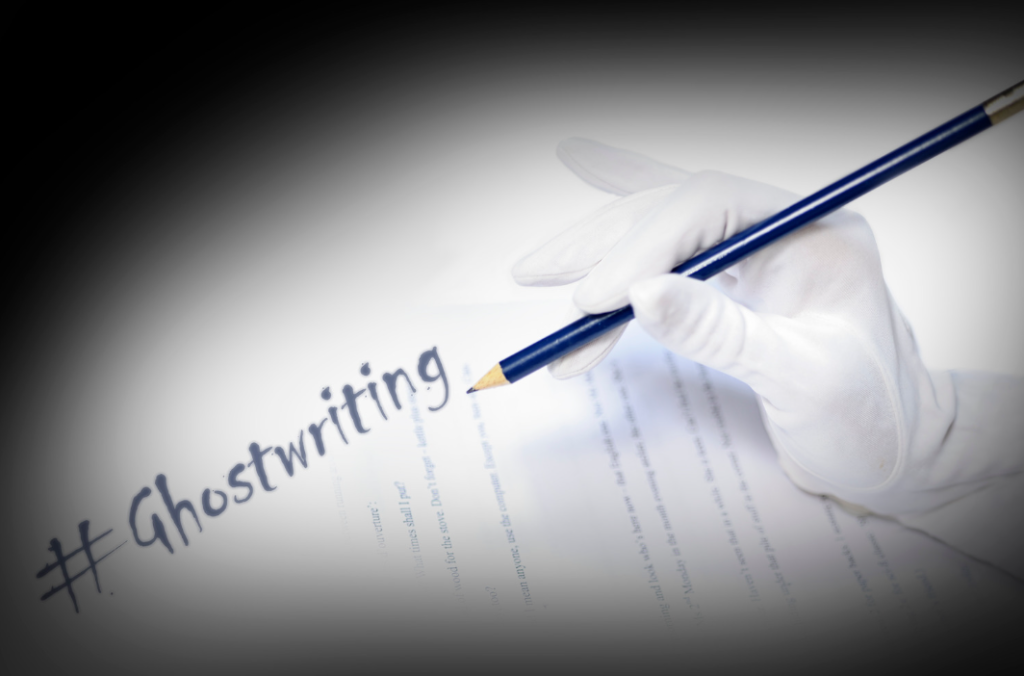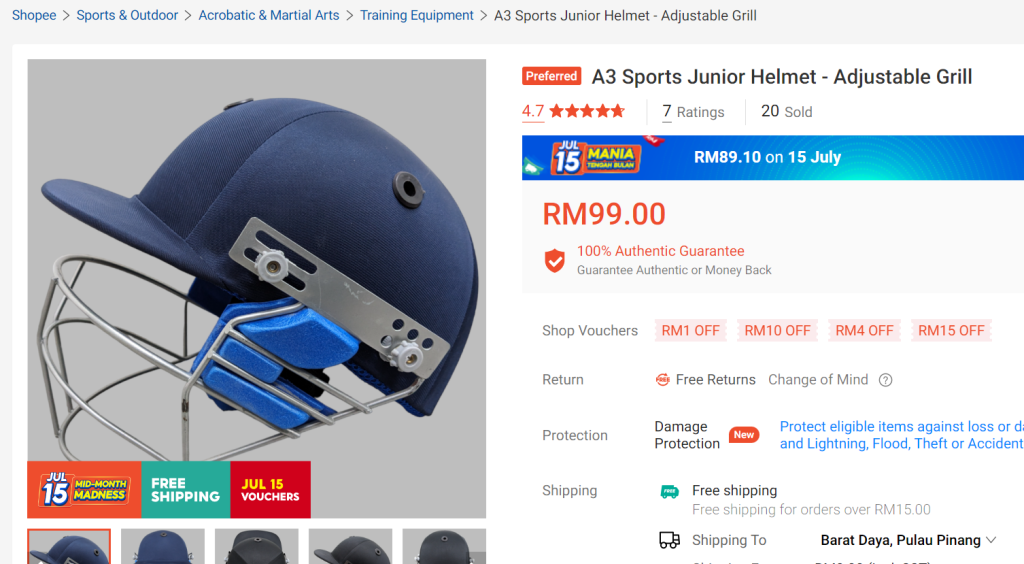In the digital age, content is king. We see content in everywhere. There are many types of content writing. Each type serves a unique purpose. Blog posts engage readers. Copywriting persuades them. Technical documentation provides detailed information. Creative storytelling entertains. Whether you want to inform, entertain, or convert readers, understanding these styles is crucial. Discover the world of content writing with us.
Different types of content writing
Although many types of content writing exist, I’ll cover seven major types here. These include blog posts, copywriting, technical writing, social media content, email writing, product description and ghostwriting.
Copywriting
Copywriting is the art of writing content (often referred to as “copy”) that is specifically designed to persuade people to take some form of action, such as making a purchase, signing up for a service, or clicking on a link. Copywriting examples are – content for any advertising, marketing materials, websites, emails, and other promotional content.

Features
- Persuasive Language: Uses compelling and persuasive language to motivate the reader to take a specific action.
- Clear Call-to-Action: Includes a clear and direct call-to-action, guiding the reader on what to do next.
- Conciseness: Delivers the message in a concise manner, avoiding unnecessary words and jargon.
- Audience Focus: Tailored to the target audience’s needs, preferences, and pain points.
- Emotional Appeal: Leverages emotional triggers to connect with the reader and elicit a response.
- Brand Voice Alignment: Consistent with the brand’s voice and personality to maintain a cohesive identity.
- Benefit-Oriented: Highlights the benefits and value of the product or service, showing how it solves the reader’s problem.
Examples
- Product Descriptions
- Advertising Slogans
- Email Marketing
- Social Media Ads
- Landing Page Content
Blog writing
Blogs are written content for a regularly updated website or online platform where individuals or organizations share information, opinions, insights, and experiences on various topics.

The purpose of blogs can be many –
- Information Sharing
- Entertainment
- Education
- Building credibility
- Website traffic generation
Example of blogs
- Travel Destinations
- Health and Fitness Tips
- Technology Trends
- Personal Finance Advice
- Cooking Recipes
Social media content writing
Social media content writing involves writing content for social media platforms such as Facebook, Twitter, Instagram, LinkedIn, TikTok, and others. The goal of social media content writing is to engage the audience, build brand awareness, and drive traffic to the social platforms.

Features
Below are the features of social media content
- Brevity: Social media content is often concise, delivering the message quickly to capture attention in a short span.
- Engaging and Interactive: It encourages interaction through likes, shares, comments, and other forms of engagement, often using calls to action.
- Visual Elements: Incorporates images, videos, GIFs, and infographics to make posts more appealing and to enhance message delivery.
- Brand Voice Consistency: Maintains a consistent tone and style that aligns with the brand’s voice and personality.
- Trending and Relevant: Taps into current trends, events, and hashtags to remain relevant and increase visibility.
- Audience-Centric: Tailored to the interests and preferences of the target audience to foster connection and engagement.
- SEO and Hashtags: Utilizes keywords and hashtags strategically to increase discoverability and reach a broader audience.
Examples
- Social media post
- Ad content
- Behind-the-Scenes Stories
- User-Generated Content
- Polls and Surveys
- How-to Guides
Ghostwriting
Ghostwriting is writing content on behalf of someone else who is credited as the author.

Features
- Client Voice Mimicry: Accurately replicates the client’s voice and style to ensure seamless integration with their existing body of work.
- Confidentiality: Maintains strict confidentiality, with the ghostwriter’s identity often remaining undisclosed.
- Customization: Tailors content to meet specific client needs, preferences, and goals.
- Extensive Research: Involves thorough research to ensure accuracy, credibility, and depth in the content.
- Adaptability: Capable of writing across various genres, formats, and subjects as required by the client.
- High-Quality Standards: Delivers polished, professional, and error-free content.
- Collaboration: Often involves close collaboration with the client to ensure the final product aligns with their vision and objectives.
Examples
The ghostwriter’s role is to write the content allowing another person to take credit for it. Some common fields where ghostwriting is common are –
- literature
- journalism
- academic writing
- business content
Technical writing
Technical writing involves writing technical information clearly and concisely. This form of writing is common in engineering, science, technology, medicine, and manufacturing industries. The purpose of technical writing is to communicate technical concepts, instructions, procedures, and documentation to the audience.

Features
- Clarity: Uses clear and precise language to ensure the information is easily understood by the target audience.
- Accuracy: Provides exact and factual information, often supported by data and evidence.
- Structured Format: Follows a logical and organized structure, including headings, subheadings, and bullet points for easy navigation.
- Detail-Oriented: Includes comprehensive details and thorough explanations to cover all necessary aspects of the topic.
- Audience-Specific: Tailors content to the knowledge level and needs of the intended audience, ensuring it is neither too simplistic nor overly complex.
- Use of Visuals: Incorporates diagrams, charts, and other visual aids to enhance understanding and illustrate key points.
- Consistency and Standardization: Adheres to industry standards and guidelines, maintaining consistency in terminology and style throughout the document.
Examples
- User Manuals
- Software Documentation
- Technical Reports
- Instructional Guides
- API Documentation
Email writing
Email writing involves crafting messages for communication. It includes formal business emails, marketing campaigns, and personal notes. Clarity, brevity, and a friendly tone are key to effective email writing.

Features
- Clear Subject Line: Uses a concise and informative subject line to grab attention and indicate the email’s purpose.
- Personalization: Tailors the content to the recipient, often including their name and personalized details.
- Conciseness: Delivers the message in a brief and to-the-point manner, respecting the reader’s time.
- Professional Tone: Maintains a professional and courteous tone appropriate to the context and relationship.
- Call-to-Action: Includes a clear and specific call-to-action, guiding the recipient on the next steps.
- Proper Formatting: Uses proper formatting, including paragraphs, bullet points, and whitespace for readability.
- Proofreading: Ensures the email is free from grammatical and typographical errors through careful proofreading.
Examples
- Newsletters
- Promotional Offers
- Transactional Emails (e.g., order confirmations)
- Event Invitations
- Customer Surveys
Product description
Product description writing involves creating concise, engaging text that highlights the features and benefits of a product. It aims to inform potential customers and persuade them to make a purchase. Effective descriptions are clear, compelling, and tailored to the target audience.

Features
- Clear and Concise: Provides essential information about the product in a straightforward and easy-to-understand manner.
- Highlight Benefits: Emphasizes the key benefits and unique selling points of the product.
- Detailed Specifications: Includes detailed specifications such as size, weight, materials, and other relevant details.
- Targeted Language: Uses language that resonates with the target audience and addresses their needs and preferences.
- High-Quality Images: Accompanied by high-quality images to give a visual representation of the product.
- SEO Optimization: Incorporates relevant keywords to improve search engine visibility.
- Persuasive Tone: Employs a persuasive tone to encourage potential customers to make a purchase.
Example
- Feature description
- Product comparison
- Ecommerce product description
- Usage instruction
Conclusion
Understanding the different types of content writing is essential for content writers and people who need content writing services. Each writing style has its unique strengths and purposes, from engaging blog posts to persuasive product descriptions. Mastering these can help you connect with your audience, convey your message clearly, and achieve your goals. Explore these writing types to enhance your content strategy and succeed in the digital world.
Do you need blog or any other content writing services? Hire the most professional content writer in Bangladesh today at an affordable price.
